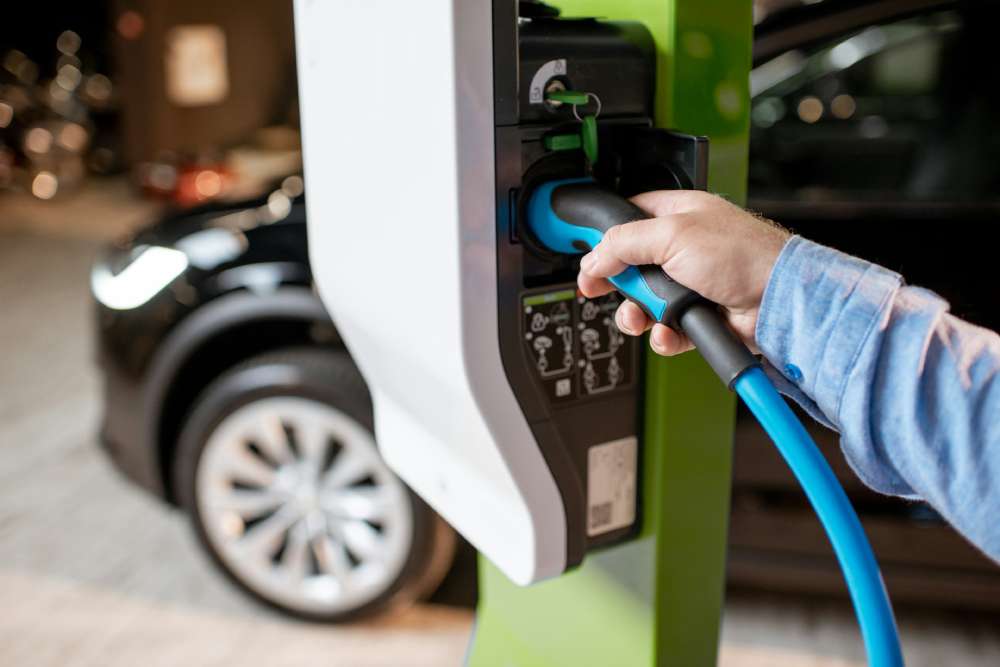
The narrative of electric vehicle infrastructure is not merely about installing charging stations; it encompasses the evolution of an ecosystem integral to sustainable transport. This ecosystem includes a network of chargers, supportive technologies, and grid management solutions. A crucial element in this transition is the development of electric vehicle infrastructure, particularly the role of DCFC EV chargers.
The maturity of this infrastructure will determine the success of EV adoption in mainstream markets. As city populations burgeon and the environmental impacts of fossil fuels become increasingly untenable, sound EV infrastructure emerges as more than just a luxury—it’s a necessity for future urban planning and transportation strategies.
Contents
- 1 Current Trends in EV Charging Stations
- 2 The Importance of DC Fast Charging
- 3 Challenges in Scaling EV Infrastructure
- 4 Future Innovations in Electric Vehicle Charging
- 5 The Environmental Impact of Expanding Charging Networks
- 6 Government Policies and Support for EV Infrastructure
- 7 Conclusion: The Future of Mobility
Current Trends in EV Charging Stations
In recent years, there has been a significant uptick in the installation of EV charging stations worldwide. The private sector, driven by consumer demand for convenient charging solutions, works with governmental bodies to expand accessibility to these stations.
This has resulted in innovative approaches such as integrating charging stations into existing urban infrastructure, like parking garages and gas stations, thus capitalizing on already utilized spaces without necessitating entirely new builds. Despite these efforts, the distribution and availability of charging facilities remain uneven globally, with many rural areas still underserved.
The Importance of DC Fast Charging
At the forefront of necessary innovations is the deployment of DC Fast Chargers (DCFC). These chargers are a game-changer in the EV market, offering a vastly improved user experience by substantially cutting down charging times compared to conventional chargers.
According to the Department of Energy, the ability to replenish an electric vehicle’s battery to nearly complete in minutes instead of hours offers the convenience that traditional fossil fuel stations provide, thus removing one of the significant barriers to EV adoption. As efficiency becomes more crucial, DCFCs are set to play an even more central role in supporting fleets and businesses that rely on quick turnaround times.
Challenges in Scaling EV Infrastructure
Expanding EV infrastructure is not without its challenges. One major hurdle is the hefty upfront cost of setting up comprehensive charging networks. Implementing these systems demands considerable financial resources and poses technical difficulties, like guaranteeing compatibility among various EV models and merging with current grid infrastructures.
Another critical issue relates to grid capacity management, where the increased demand from widespread EV adoption could strain current electricity networks, necessitating substantial upgrades and innovations in energy management.
Future Innovations in Electric Vehicle Charging
Innovation is the linchpin for overcoming the logistical and practical challenges of EV infrastructure expansion. Notable advances include wireless charging technology, which promises greater ease and flexibility for EV owners. Additionally, ultra-fast charging technologies are under development, aiming to significantly reduce charging times.
Artificial intelligence and machine learning integration are poised to revolutionize the management of charging networks, optimize energy distribution, and predict peak usage patterns more accurately, as detailed in recent charging technology advancements.
The Environmental Impact of Expanding Charging Networks
The environmental implications of advancing EV infrastructure are overwhelmingly positive, provided sustainable practices are employed. The shift towards electric vehicles is anticipated to lead to a marked decrease in greenhouse gas emissions, contributing to global efforts to combat climate change.
This transition’s full benefits can only be realized if the production and installation of EV infrastructure are managed sustainably by using renewable energy sources and minimizing the ecological footprint of the construction process.
Government Policies and Support for EV Infrastructure
Government interventions have been instrumental in propelling the growth of EV infrastructure. Through strategic initiatives such as tax incentives for EV purchases and funding support for infrastructure projects, governments are setting the stage for a broader adoption of electric vehicles.
Additionally, international collaboration and establishing universal charging standards are becoming increasingly important to ensure compatibility and facilitate cross-border EV travel. Such measures underscore the critical role of policy in shaping a sustainable transportation future.
Conclusion: The Future of Mobility
The advent of electric vehicle infrastructure marks a transformative era in transportation. It is a testament to what can be achieved when innovation, policy, and consumer needs align toward a common goal. While the path to a fully sustainable and efficient EV ecosystem is fraught with challenges, the continued research, investment, and policy reform efforts paint a hopeful picture. With the ongoing advancements in technology and infrastructure, the future of mobility looks cleaner and more efficient. It is poised to redefine how we think about transportation in the coming decades.



Leave a Reply
You must be logged in to post a comment.